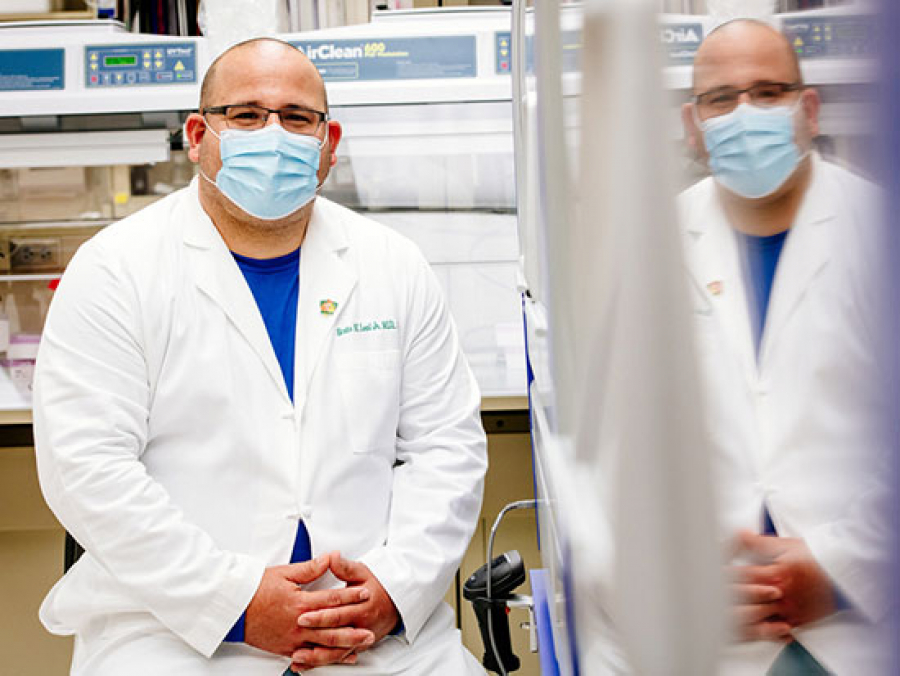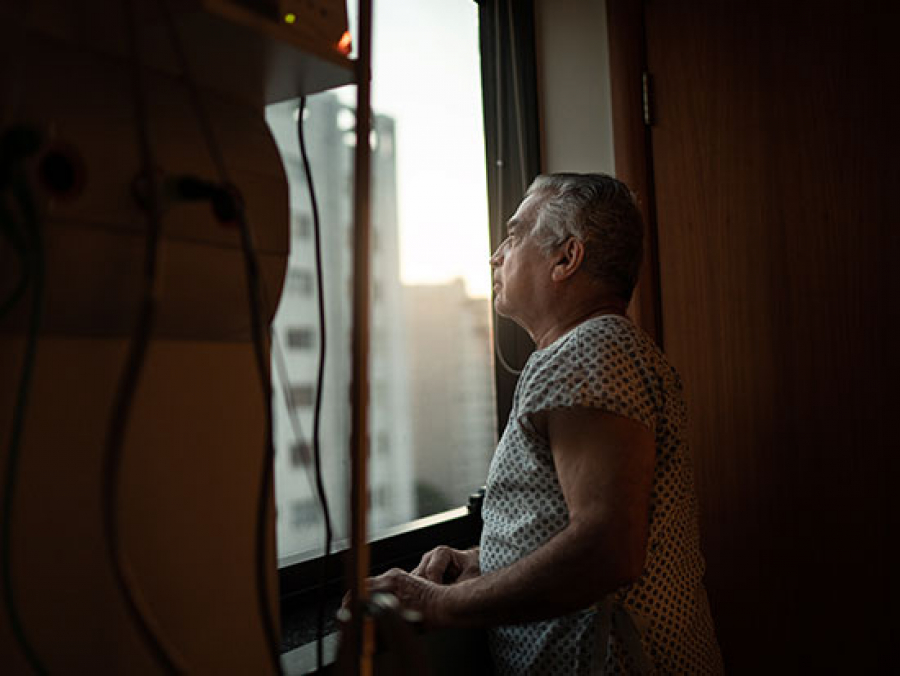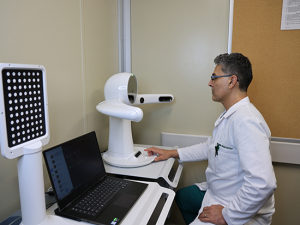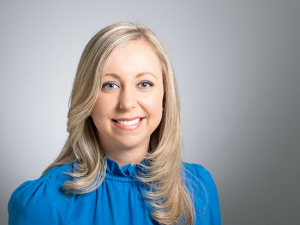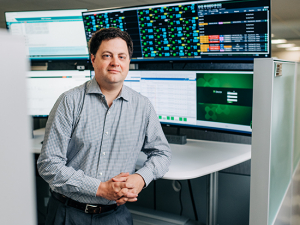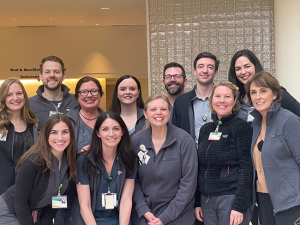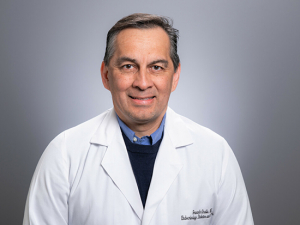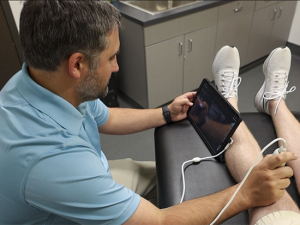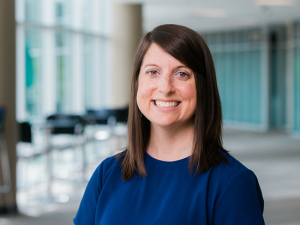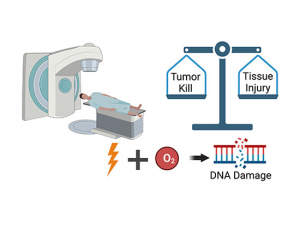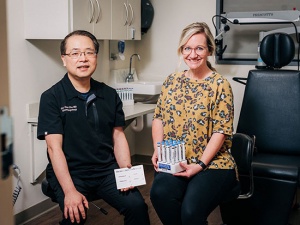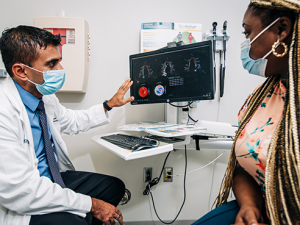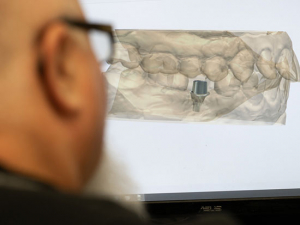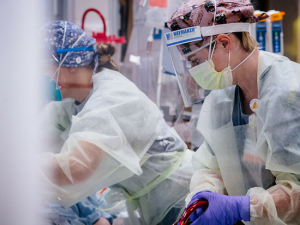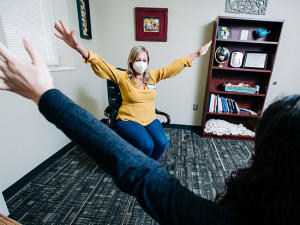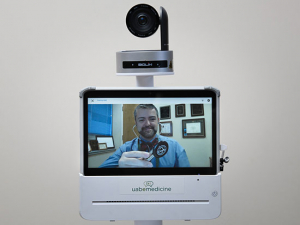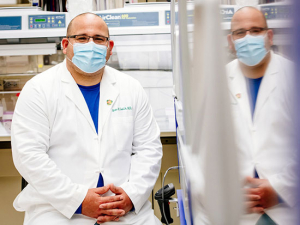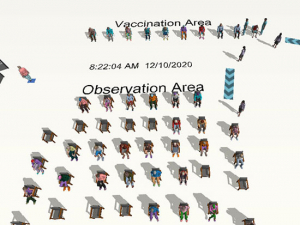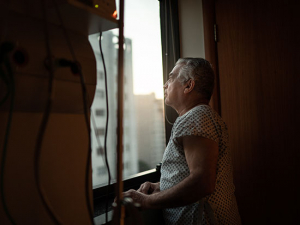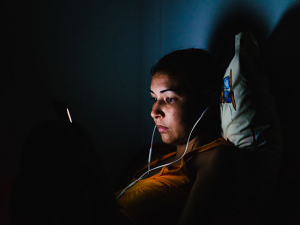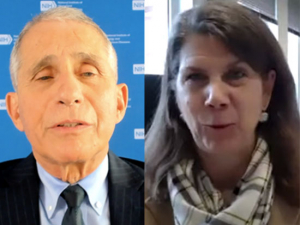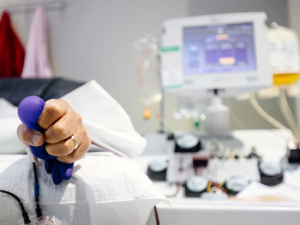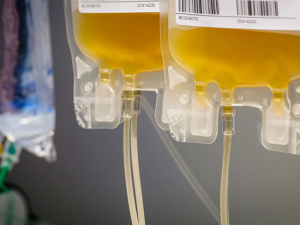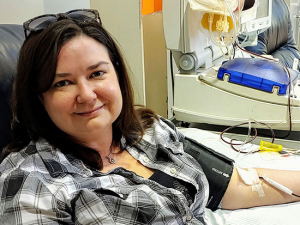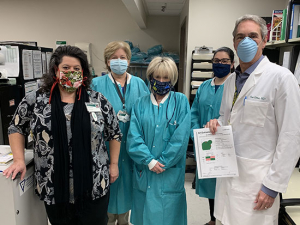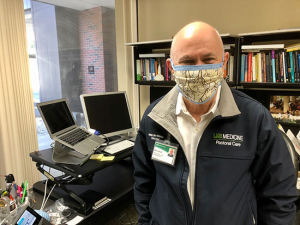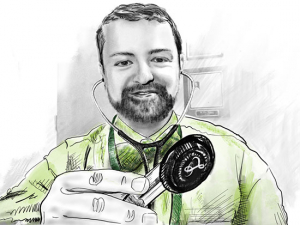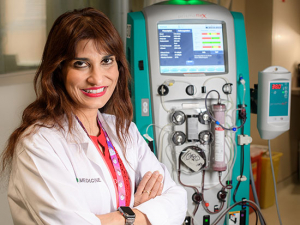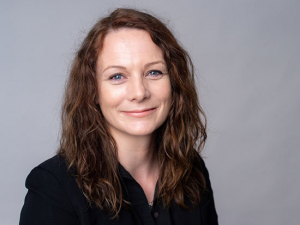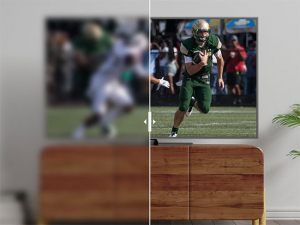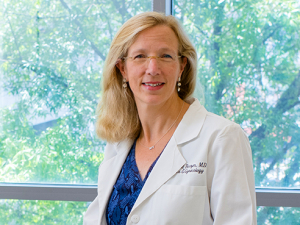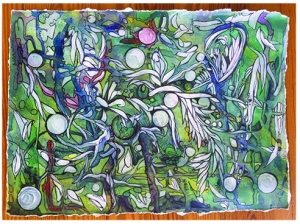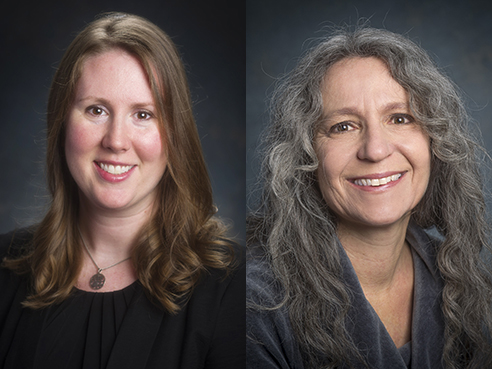 Carrie Ezell, Ph.D. (left), art therapist at the Employee Assistance and Counseling Center, and Christianne Strang, Ph.D., a research instructor at UAB and part-time art therapistWhen Carrie Ezell was fresh out of college, she spent some time hiking from Maine to Georgia along the Appalachian Trail and worked in an art store. Little did she know that part-time job would have a full-time impact.
Carrie Ezell, Ph.D. (left), art therapist at the Employee Assistance and Counseling Center, and Christianne Strang, Ph.D., a research instructor at UAB and part-time art therapistWhen Carrie Ezell was fresh out of college, she spent some time hiking from Maine to Georgia along the Appalachian Trail and worked in an art store. Little did she know that part-time job would have a full-time impact.
At work one day, she noticed a book highlighting various jobs for artists. It was the first time she’d heard of art therapy, an integrative mental health practice to support personal and relational treatment goals.
“I already knew art as therapy for myself,” said Ezell, a longtime artist. “So I went home, found a grad school online that night and applied to it.”
In 2014, Ezell, who earned her masters at UAB in 2006 and her doctorate in 2016, joined UAB’s Employee Assistance and Counseling Center (EACC) as its art therapist. Only 12 art therapists in Alabama are credentialed, and UAB is home to two of those — Ezell and Christianne Strang, Ph.D., a research instructor and part-time art therapist.
A creative outlet
Art therapy enables people to translate their emotions into physical shapes — a process called sublimation — through exercises such as drawing, painting and sculpture.
“It’s the process of getting an emotion out of yourself,” Ezell said. “Putting a shape to it can be powerful. It becomes ‘the other.’ Instead of ‘I feel anger,’ it becomes, ‘This is the anger.’ It creates distance.”
Art therapists typically begin with activities such as coloring with pencils or markers because “we’ve all held a pen, so it’s not too strange,” Ezell said.
“As comfort and confidence grows, we’re able to climb those steps into more abstract work,” she said.
In this way, clients can address their problems and express their feelings.
Science behind the artThe connections between art therapy and the brain are relatively simple. The brain likely processes basic emotions, especially fear, in the amygdala, which is connected to both sensory and motor systems.“ One of the advantages of art therapy is that it can provide relief by pairing fear-arousing emotions with positive, new sensory experiences. Successfully coping with fear helps regulate and integrate affective experiences.” —Richard Carr and Noah Hass-Cohen, authors |
“We all have those experiences where we can’t find the words — words don’t carry what we’re feeling,” Strang said. “Art is one way to work through those thoughts and feelings.”
Because there are so few art therapists in the state, people often have misconceptions about art therapy, Ezell said. One is that participants have to have a certain level of artistic ability or talent to benefit, which isn’t true. Art therapy is a regulated mental health field with specific goals for patients.
“It’s not about what the final product looks like. It’s not an art class,” she said. “It’s about a different and unique way to look at an issue or problem.”
Much like Ezell, Strang had a passion for art but knew she’d never be a full-time artist. In high school, she was drawn to psychology and discovered art therapy as a career option in a college course catalog. By 1987 she had earned her master’s degree in art therapy and began practicing. About 10 years later, Strang had a realization that would change the trajectory of her career: She wanted to learn how art therapy worked — at a neurological level.
Strang applied to and earned her doctorate in UAB’s behavioral neuroscience program in the Department of Psychology. Now she is a research instructor and co-directs the same introductory neurobiology courses in the Dauphin Island Sea Lab in which she participated as a student. Her research explores the role of neurotransmitter receptors in visual processing and the effect of Alzheimer’s disease on that processing.
“It turns out I love science, but I always wanted to stay connected to art therapy,” said Strang, who also was installed as board president of the American Art Therapy Association in November 2017.
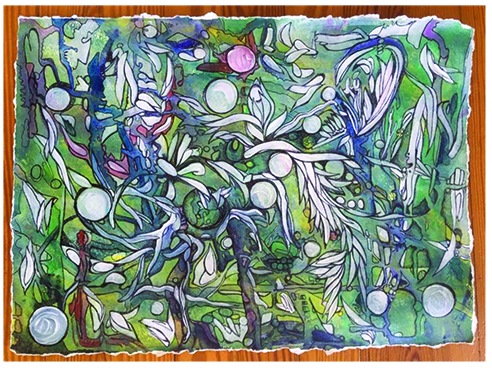 “Untitled” by Strang. Spring, 2016. Mixed media/watercolor.
“Untitled” by Strang. Spring, 2016. Mixed media/watercolor.
Finding a voice
Strang has continued art therapy as a side practice, and about four years ago she began teaching a course, PY 426 “Creative Arts Therapies,” which provides an overview of the educational, ethical and credentialing requirements.
“When I’m talking to students who study neuroscience, I have to give them an idea why art therapy matters. Feelings are neuroscience — everything is all in your head. Thinking about it that way can normalize many patients’ experiences,” Strang said.
In the past 30 years, Strang has worked in inpatient psychiatric facilities and residential treatment centers and with HIV/AIDS patients and individuals who struggle with eating disorders or traumatic experiences. They can be some of the most creative and intelligent people, she said.
|
“We all have those experiences where we can’t find the words — words don’t carry what we’re feeling. Art is one way to work through those thoughts and feelings.” |
“Art can become a voice for a patient,” she said. “Patients with eating disorders often use food or a relationship with food as a voice. If we can use art as an alternative to understanding things and better communicating them, then food can just become food again and their body can just be a body again and not a cry for help.”
For Strang, the goal is to help instill in them the ability to use creativity to process feelings.
“They can keep the connection to creativity and self-esteem and can integrate that into the rest of their lives,” Strang said. “If they continue to do art, just appreciate art more or have better overall access to their own creativity, that creativity becomes healing.”
Providing encouragement
Art therapy can be a one-on-one exercise with a therapist or can be done as part of a group, Ezell said, and some clients mix art therapy in with other types of counseling.
“We do have clients that are only art therapy, but some use a mixture of different kinds,” she said. “Some are referred to me from another EACC therapist, some do family art therapy and some do it as couples and or in groups.”
|
The EACC offers a monthly public art therapy group. The next session will be held 3:30-4:30 p.m. April 17 in the WPCC Room G. To enroll, login uab.edu/learningsystem and select the class in the catalog tab. |
In the Employee Assistance and Counseling Center, Ezell works with UAB employees and their immediate families, who are entitled to 12 free sessions per calendar year. The EACC also offers a monthly public art therapy group, open to all UAB, UAB Medicine and VIVA employees, which Ezell teaches. The next session focusing on self-care will be held 3:30-4:30 p.m. April 17 in the West Pavilion Conference Center Room G. To enroll, login uab.edu/learningsystem and select the class in the catalog tab.
Whether clients participate individually or as part of a group, art therapy can help people reconnect to a part of themselves they may have long left behind, Strang said.
“If you look at children, they love crayons and love coloring. Somewhere along the way, they learn that only artists can ‘do’ art, so they stop,” she said. “Part of our role is getting people to understand they don’t have to be an artist or that they are more of an artist than people give them credit for. We’re teaching people to re-access that.”
